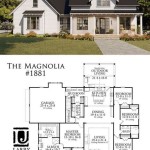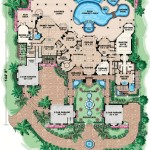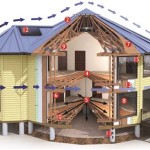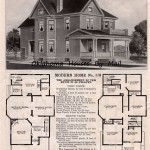Contemporary design house plans represent a modern approach to home architecture, featuring innovative design elements, sustainable features, and functional layouts. These plans prioritize natural light, open spaces, and a seamless flow between indoor and outdoor living areas.
Contemporary design house plans have become increasingly popular due to their adaptability and aesthetic appeal. They cater to modern lifestyles with their efficient use of space, energy-efficient features, and customizable options. From sleek minimalist designs to luxurious open-floor plans, contemporary house plans offer a wide range of choices to suit diverse preferences.
In this article, we will delve into the key elements of contemporary design house plans, exploring their features, advantages, and the latest trends in this dynamic field of architecture.
Contemporary design house plans are characterized by a range of important features that contribute to their modern and functional appeal.
- Open floor plans
- Large windows and natural light
- Sustainable materials and construction
- Clean lines and minimalist design
- Indoor-outdoor living spaces
- Energy-efficient features
- Smart home technology
- Customizable options
- Adaptable to various lifestyles
- Aesthetically pleasing designs
These elements combine to create contemporary house plans that are both stylish and functional, meeting the demands of modern living.
Open floor plans
Open floor plans are a defining characteristic of contemporary design house plans. They eliminate traditional walls and barriers between living spaces, creating a more spacious, airy, and interconnected environment.
Open floor plans allow for a seamless flow of natural light throughout the home, reducing the need for artificial lighting and creating a more inviting and comfortable atmosphere. They also promote a sense of community and togetherness, as family members and guests can easily interact and socialize in shared spaces.
Furthermore, open floor plans offer greater flexibility and adaptability. Furniture and room layouts can be easily rearranged to suit changing needs and preferences, making these homes ideal for growing families or those who frequently entertain guests.
Overall, open floor plans in contemporary design house plans enhance livability, promote natural light, foster social interaction, and provide a versatile space that can adapt to various lifestyles.
Large windows and natural light
Contemporary design house plans emphasize the use of large windows and natural light to create bright, airy, and inviting living spaces. Floor-to-ceiling windows and expansive glass panels bring the outdoors in, blurring the boundaries between interior and exterior spaces.
Large windows allow for ample natural light to flood the home, reducing the need for artificial lighting and creating a more energy-efficient and sustainable environment. Natural light has numerous benefits for well-being, including boosting mood, improving sleep quality, and reducing stress levels.
Furthermore, large windows provide stunning views of the surrounding landscape, bringing a sense of nature and tranquility into the home. Whether overlooking a lush garden, a sparkling lake, or a vibrant city skyline, the integration of natural light and outdoor views enhances the overall aesthetic appeal and livability of contemporary design house plans.
To maximize the benefits of natural light, contemporary house plans often incorporate passive solar design principles. This involves strategically placing windows and skylights to capture sunlight during the winter months for heating and minimizing heat gain during the summer months for cooling. By harnessing the power of natural light, contemporary design house plans create comfortable and healthy living environments while reducing energy consumption.
Overall, large windows and natural light play a crucial role in contemporary design house plans, promoting well-being, energy efficiency, and a harmonious connection between indoor and outdoor spaces.
Sustainable materials and construction
Contemporary design house plans prioritize the use of sustainable materials and construction practices to minimize environmental impact and promote occupant well-being.
- Recycled and renewable materials
Contemporary house plans incorporate recycled materials, such as reclaimed wood and metal, to reduce waste and conserve natural resources. Renewable materials, like bamboo and cork, are also used for flooring, countertops, and other surfaces due to their durability and sustainability.
- Energy-efficient appliances and systems
Energy-efficient appliances, lighting, and HVAC systems are essential components of sustainable contemporary design house plans. These features reduce energy consumption, lower utility bills, and minimize the home’s carbon footprint.
- Low-VOC materials
Volatile organic compounds (VOCs) are harmful chemicals that can be emitted from building materials. Contemporary house plans prioritize the use of low-VOC materials, such as paints, adhesives, and sealants, to create a healthier indoor environment and reduce the risk of respiratory issues.
- Water-saving fixtures and landscaping
Water conservation is a key aspect of sustainable contemporary design house plans. Low-flow toilets, faucets, and showerheads reduce water usage. Drought-tolerant landscaping and rainwater harvesting systems further minimize water consumption and promote environmental stewardship.
By incorporating sustainable materials and construction practices, contemporary design house plans create homes that are not only stylish but also environmentally responsible and healthy for occupants.
Clean lines and minimalist design
Clean lines and minimalist design are fundamental principles of contemporary design house plans. This approach emphasizes simplicity, functionality, and the elimination of unnecessary ornamentation.
Clean lines refer to the use of straight lines, sharp angles, and geometric shapes throughout the home’s architecture and interior design. This creates a sense of order, precision, and visual clarity. Horizontal and vertical lines are often used to create a harmonious balance and flow of space.
Minimalist design involves reducing clutter and unnecessary elements, focusing on the essential components of a space. This approach promotes a sense of serenity, spaciousness, and well-being. Contemporary house plans embrace minimalism by incorporating built-in storage solutions, multi-functional furniture, and open floor plans that minimize visual distractions.
The combination of clean lines and minimalist design creates a timeless and sophisticated aesthetic that is both functional and visually appealing. It allows for a seamless integration of furniture, dcor, and natural elements, resulting in a cohesive and inviting living environment.
Overall, clean lines and minimalist design in contemporary design house plans contribute to a sense of order, simplicity, and spaciousness, creating homes that are both aesthetically pleasing and highly livable.
Indoor-outdoor living spaces
Contemporary design house plans prioritize the seamless integration of indoor and outdoor living spaces, creating a harmonious connection between the home and its surroundings.
Large sliding glass doors, floor-to-ceiling windows, and expansive decks or patios extend the living space beyond the traditional confines of the home. These elements allow for an abundance of natural light to flood the interior and provide stunning views of the outdoors.
Outdoor living spaces are carefully designed to complement the home’s architecture and interior design. They often feature comfortable seating areas, outdoor kitchens, and fire pits, creating inviting spaces for relaxation, entertainment, and al fresco dining.
The integration of indoor-outdoor living spaces blurs the boundaries between the home and its surroundings, promoting a sense of openness, freedom, and connection to nature. It extends the living space, providing additional areas for activities, entertainment, and relaxation.
Furthermore, indoor-outdoor living spaces enhance the overall well-being of occupants. Exposure to natural light and fresh air has been shown to have numerous benefits, including reducing stress levels, improving mood, and boosting creativity.
Energy-efficient features
Contemporary design house plans incorporate a range of energy-efficient features to minimize environmental impact and reduce utility costs. These features contribute to a sustainable and eco-friendly living environment while enhancing occupant comfort.
- High-performance insulation
High-performance insulation materials, such as spray foam insulation or cellulose insulation, are used in walls, ceilings, and floors to minimize heat loss and heat gain. This reduces the need for heating and cooling systems, resulting in significant energy savings.
- Energy-efficient windows and doors
Energy-efficient windows and doors are designed to minimize heat transfer and air leakage. Double- or triple-glazed windows with low-emissivity (low-E) coatings reflect heat back into the home during winter and keep it out during summer, reducing energy consumption for heating and cooling.
- Energy-efficient appliances and lighting
Contemporary house plans incorporate energy-efficient appliances, such as Energy Star-rated refrigerators, dishwashers, and washing machines, which consume less energy and water. Energy-efficient lighting, including LED and CFL bulbs, provides ample illumination while reducing energy usage.
- Renewable energy systems
Some contemporary house plans include renewable energy systems, such as solar panels or geothermal heating and cooling systems, to generate clean and sustainable energy. These systems reduce reliance on fossil fuels and minimize the home’s carbon footprint.
By incorporating these energy-efficient features, contemporary design house plans create homes that are not only stylish and comfortable but also environmentally conscious and economical to operate.
Smart home technology
Contemporary design house plans embrace smart home technology to enhance convenience, security, and energy efficiency. Smart home systems integrate various devices and appliances within the home, allowing for automated control and remote access through a central hub or mobile application.
Smart lighting systems allow homeowners to control the intensity and color of lights remotely, creating ambiance and saving energy. Automated thermostats adjust the temperature based on occupancy and preferences, optimizing energy consumption. Smart security systems provide real-time monitoring, remote access to security cameras, and automated alerts in case of intrusions or emergencies.
Smart home technology extends beyond basic automation. Voice-activated assistants, such as Amazon Alexa or Google Assistant, enable hands-free control of smart devices, music, and information. Smart appliances, including refrigerators, ovens, and washing machines, offer remote monitoring and control, allowing homeowners to manage household tasks from anywhere.
Smart home technology in contemporary design house plans provides numerous benefits. It enhances convenience by automating daily tasks, improves security by providing remote monitoring and alerts, and promotes energy efficiency through automated controls. By integrating smart technology into the home’s design, contemporary house plans create a living environment that is both stylish and technologically advanced.
Customizable options
Contemporary design house plans offer a wide range of customizable options to cater to individual preferences, lifestyles, and specific site requirements. This flexibility allows homeowners to create a home that truly reflects their unique needs and aspirations.
- Layout and floor plan
Homeowners can choose from a variety of pre-designed floor plans or work with an architect to create a custom layout that meets their specific requirements. The layout can be customized to accommodate the number of bedrooms and bathrooms, the size and shape of the rooms, and the flow of traffic throughout the home.
- Exterior design
The exterior of the home can be customized to match the homeowner’s taste and the surrounding environment. Options include choosing the style of the house, such as modern, traditional, or craftsman, as well as selecting the materials used for the exterior, such as brick, stone, or siding.
- Interior finishes
The interior finishes of the home can be customized to create a unique and personalized living space. Homeowners can choose from a wide range of options for flooring, countertops, cabinetry, and paint colors to create a cohesive and stylish interior design.
- Smart home features
Contemporary design house plans can be customized to include a variety of smart home features, such as automated lighting, smart thermostats, and security systems. These features can be integrated into the home’s design to enhance convenience, security, and energy efficiency.
The customizable options available in contemporary design house plans allow homeowners to create a home that is tailored to their individual needs and preferences. By working with an architect or builder, homeowners can create a space that is both stylish and functional, perfectly suited to their lifestyle.
Adaptable to various lifestyles
Contemporary design house plans are designed to be adaptable to various lifestyles, offering flexibility and versatility to meet the changing needs of homeowners. This adaptability is achieved through a combination of open floor plans, multi-functional spaces, and customizable features.
Open floor plans are a defining characteristic of contemporary design house plans. By eliminating traditional walls and barriers between living spaces, open floor plans create a more spacious and fluid environment. This allows homeowners to configure and reconfigure the space to suit their specific needs and preferences. For example, an open floor plan can be easily adapted to create a larger living area for entertaining guests or a more intimate dining space for family gatherings.
Multi-functional spaces are another key feature of adaptable contemporary design house plans. These spaces can serve multiple purposes, allowing homeowners to maximize the use of their space. For example, a home office can also be used as a guest room, or a playroom can be converted into a home gym. By incorporating multi-functional spaces into the design, homeowners can create a home that is both practical and flexible.
Customizable features are also essential for creating adaptable contemporary design house plans. Homeowners can choose from a range of options to personalize their home and make it better suited to their lifestyle. For example, they can choose the number of bedrooms and bathrooms, the size and layout of the kitchen, and the type of flooring and finishes throughout the home. By offering customizable features, contemporary design house plans allow homeowners to create a space that truly reflects their unique needs and aspirations.
The adaptability of contemporary design house plans makes them an ideal choice for homeowners who value flexibility and versatility. Whether they are looking for a home that can accommodate their growing family, a space that can be easily adapted to their changing needs, or a home that reflects their unique personality, contemporary design house plans offer the perfect solution.
Aesthetically pleasing designs
Contemporary design house plans prioritize aesthetic appeal, incorporating elements that create visually stunning and harmonious living spaces. The focus on aesthetics extends beyond mere decoration; it encompasses the overall form, materials, and details of the home, resulting in a cohesive and inviting environment.
One key aspect of the aesthetic appeal of contemporary design house plans is the use of clean lines and geometric shapes. This approach creates a sense of order and balance, resulting in a visually pleasing and sophisticated look. Straight lines, sharp angles, and geometric patterns are often used to define the architecture and interior design, creating a modern and minimalist aesthetic.
Another important element of the aesthetic appeal of contemporary design house plans is the use of natural light and open spaces. Large windows and glass doors allow for an abundance of natural light to flood the home, creating a bright and airy atmosphere. Open floor plans eliminate traditional walls and barriers between living spaces, resulting in a more spacious and fluid environment that promotes a sense of openness and tranquility.
The choice of materials also plays a significant role in the aesthetic appeal of contemporary design house plans. Natural materials, such as wood, stone, and glass, are often used to create a warm and inviting atmosphere. These materials bring a sense of the outdoors in and create a connection between the home and its surroundings. Additionally, contemporary design house plans often incorporate sustainable materials, such as recycled wood and bamboo, to minimize environmental impact while maintaining a high level of aesthetic appeal.
Overall, the aesthetic appeal of contemporary design house plans is achieved through a combination of clean lines, natural light, open spaces, and carefully chosen materials. The result is a home that is not only functional and comfortable but also visually stunning and inspiring.










Related Posts








